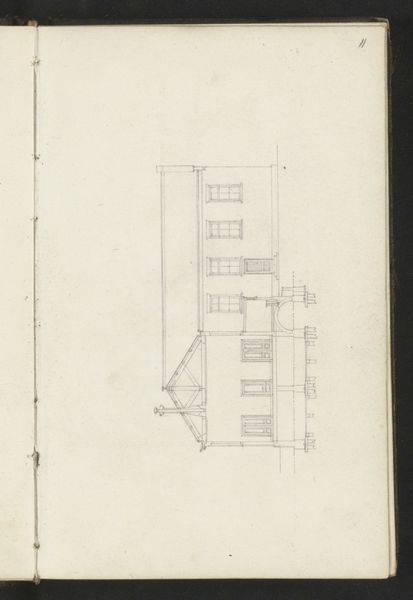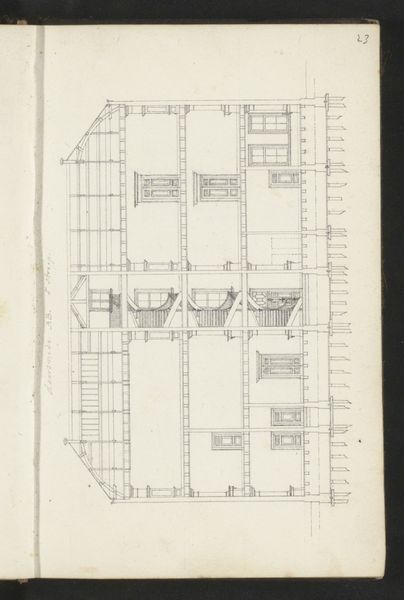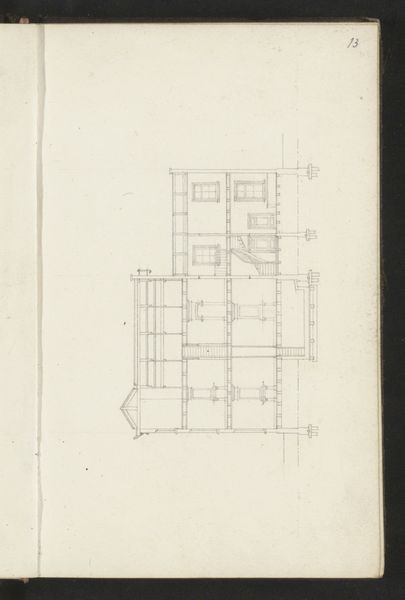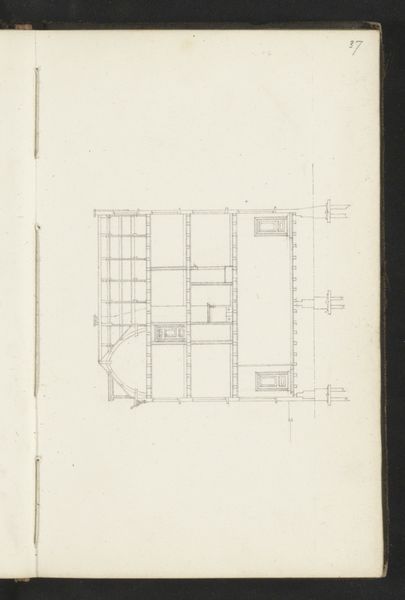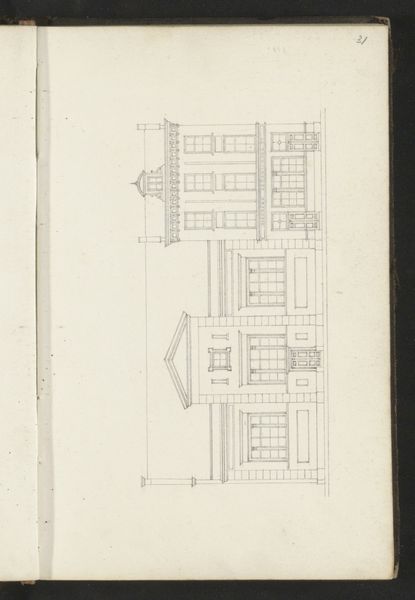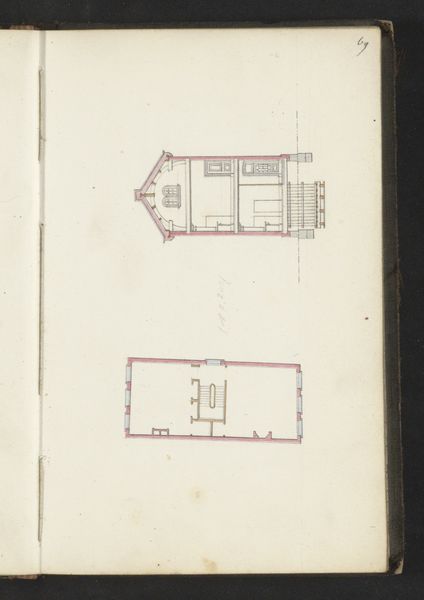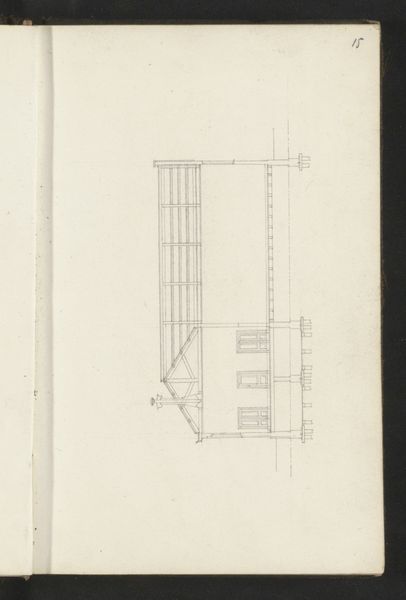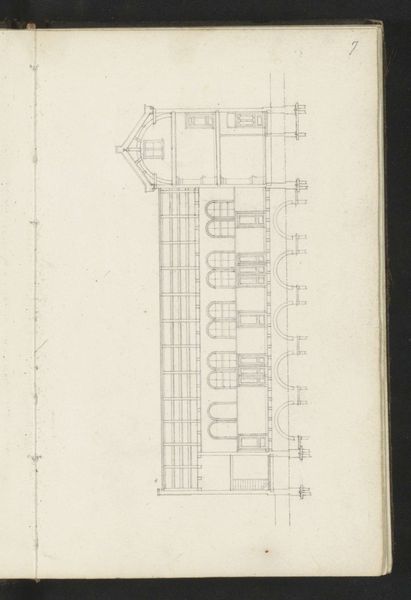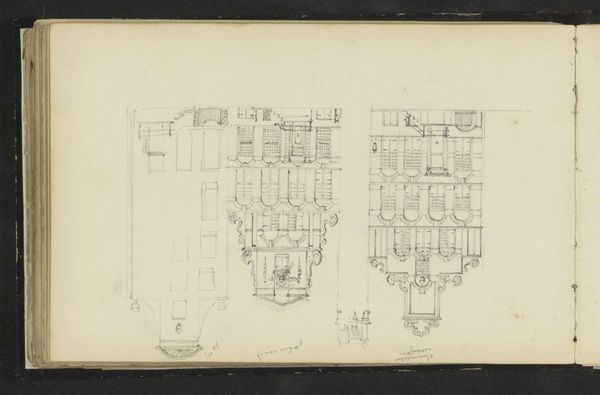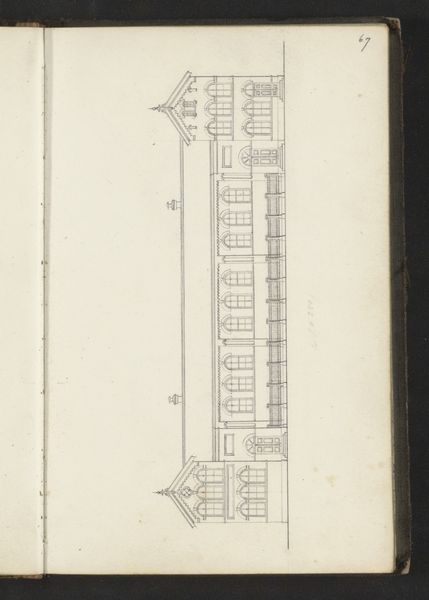
drawing, paper, pencil, architecture
#
drawing
#
paper
#
geometric
#
pencil
#
cityscape
#
architecture
#
realism
Copyright: Rijks Museum: Open Domain
Willem Springer Jr. made this drawing, Doorsneden van twee huizen, or Sections of Two Houses, in the 19th century. Springer was born in the Netherlands during a time of significant social and economic change as the country shifted from an agrarian society to an industrial one. The drawing itself offers us a peek into the domestic sphere, which during the 19th century was viewed as a female space, a refuge from the public world of politics and work. The designs suggest a structured, ordered environment, reflective of the rigid social norms and expectations placed on women of the time. The intricate details, like the positioning of windows and doorways, hint at the physical and social boundaries that shaped daily life. Consider how such architectural plans, seemingly neutral, could have served to reinforce or challenge notions of privacy, family, and gender roles. The emotional experience of inhabiting such spaces, particularly for women, would have been deeply intertwined with these structural elements, influencing their identities and their place in the world.
Comments
No comments
Be the first to comment and join the conversation on the ultimate creative platform.
